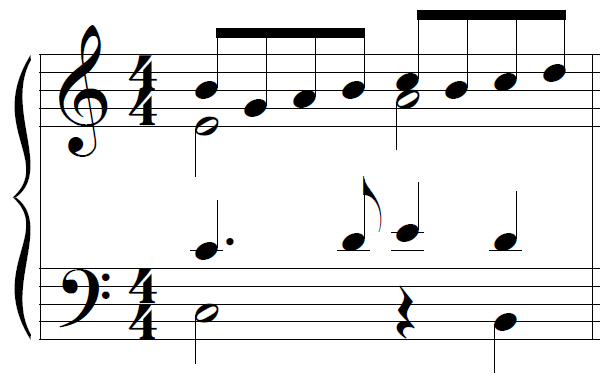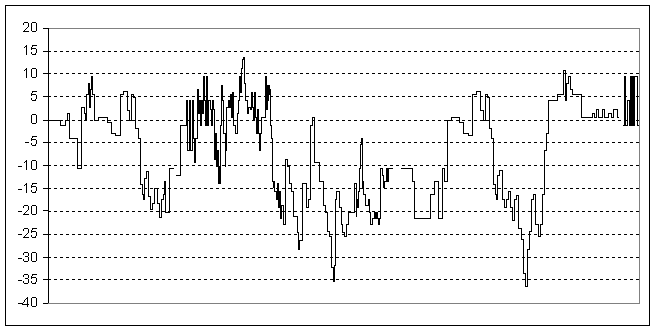
(see also Matrix Video)
This is a capella choir music. I have not made any effort to approach the beauty of human voices in the organ sound synthesis. Dynamics, such as pp, ff, diminuendo and crescendo have not been applied either, although they are important when the piece is sung. The soprano and alto parts have an organ stop with a tremolo effect.
The inclusion of this piece on the website was triggered by [Te 2004]. A quote:
Stanford Chamber Chorale, which is the highest level choral group at Stanford University, experienced the pitch drift in their performance of 'Os Justi' by Bruckner. Whenever they sang the piece, it ended with a pitch exactly semitone flat. The conductor Stephen Sano told that they were usually able to figure out which part of a music, for example a chromatic movement or a particular leading tone, had caused the pitch drift. But particularly with 'Os Justi', they could not find the reason for the pitch drift. Even in their recording session, they still sang the piece ending with the pitch a semitone flat.
What this story suggests is, that one reason of the pitch drift could be music itself. Stanford Chamber Chorale was usually able to fix the pitch drift except 'Os Justi'. It means that the pitch drift problem is unique to the piece and the reason might lie in the composition.
This is measure 39 according to the original score:

Please listen to the rumble in the last bass note (B) in this fragment:
(Measure 39, original score)
The bass note B beats with the reverberation of the preceding C (you need a bass sound - you may not hear this through your laptop speakers). This beating hardly depends on the tuning: the pitch difference between the B and the C is about 7.5 Hz in all tunings, which is in the range of noticeable beating. To avoid it, I applied a trick I also occasionally need when I play a bass-semitone on an ordinary organ: insert a rest right before the semitone leap:

This is what you can hear in the whole piece above.
Almost 31% of the melodic intervals are perfect fifths; 8.4% of those fifths have pitch ratio 40/27 in this rendering (watch them in the video). These percentages are roughly the same for the other pieces on this site. Some of the 40/27 fifths - but certainly not all - could become 3/2 if we were to accept global drift. Could it be that such 40/27 melodic fifths are so hard to sing that the easy 3/2 fifths are sung instead? Maybe the purely diatonic character of the piece makes it even harder to sing 40/27 fifths.
As for the comma drift, it could happen as a result of pure intervals in certain sequences, as Benedetti pointed out in 1585. But more often, it is just choirs singing intervals too narrow or wide, up or down. Singing minor thirds that are too narrow is a common problem. In leading a choral group for years, I discovered in listening to recordings that it often happened after a rest, or on the return to the beginning in strophic music. What we did find is that by using large and small semitones of either just intonation or meantone, the pitch drift was less, or avoided altogether. That could simply be heightened awareness of intervals, but it seemed to work consistently.
Although there is - by force - no global drift in the rendering on this website, the piece still moves back and forth through the matrix as you can watch happening in the video. The graph below also illustrates that, as explained here.

You can download zipped spreadsheet containing the exact intervals used in this piece. That shows for instance that the automatic pitch assignment does not produce any direct or mid-air syntonic commas. Explanation of column headers.